August 2018, Week 1, Fire and Rain
Okiedawn OK Zone 7
5 years ago
Featured Answer
Sort by:Oldest
Comments (68)
Megan Huntley
5 years agofarmgardener
5 years agoRelated Discussions
April 2018, Week 1
Comments (126)Nancy, As long as the new week isn't the first week of summer, I'll be okay with Spring starting over or whatever. I just don't want for us to skip Spring, so we can reset and start Spring over every week if we wish. Friday's high temperature of 84 (which was not at all forecast) reminded me that some years we also go from winter to summer overnight, and I don't like years like that. I don't think this will be one of them, but I'd sure hate to be wrong about that. Rebecca, If y'all only go to 31, I wouldn't be worried about much. I just feel like I cannot trust my forecast to be on the money because it so seldom is. They've already dropped our forecast low from 33 to 32 to 31, so I need to stop looking at it because every time I check it, it has changed again. And, just because I said that, I felt compelled to go look at the forecast again, and now it is showing 30 degrees for us. This is nuts. If I check it in another hour, will it show 29? Jennifer, I'm glad the power wasn't off for too long. We had sunshine on and off really late in the day, but not that much of it. About the time I got used to the sunshine, the clouds came back and blotted it out again. Nancy, I think we're all coasting.....too many plants inside waiting to go outside again and then into the ground. I couldn't start more now if I wanted to. However, once the plants start going into the ground and I have empty flats and empty shelf and table space, then starting more seeds (this time for the back garden) is a definite possibility. Jennifer, It feels like time to get the poor things in the ground, doesn't it? They've been waiting for so long and the weather has been so uncooperative. Jacob, I cannot speak for anyone else, but the coldest nights (after tonight) left for me are Sun @ 40 degrees and Mon @ 41 degrees. Being rural, we get frost more easily than folks in town where the heat island effect from all the concrete often helps hold temperatures up a couple of degrees, so I've seen frost often at 36 degrees, occasionally at 37 and a couple of times at 38. (This has a lot to do with official temperatures being recorded at 5' above ground level, and frost on plants basically occurring at ground level or just a foot or so above it, where air temperatures likely are colder than they are at the 5' level.) Having moved here from the city, it took me a while to get use to these unexpected frosts that occur when the air is several degrees above freezing. However, we've never had them with lows in the 40s, so I'm hoping our forecast lows are correct. Regardless, I have frost blankets enough to cover the whole front garden if a big disaster were looming, though I hope I never have to do that. I hadn't used row cover at all this year until last Sunday night and now I'm sick to death of looking at it. However, having it on the plants does make killing mosquitoes easier, so at least there's that. They land on the white fabric, I see them, I swat them and another skeeter bites the dust. Is is odd that we have mosquitoes out at the same time frost blankets are in use? Sadly, it is not. I've noticed mosquitoes seem to be becoming cold hardier all the time and we see them here in every month of the year, even when temperatures are in the single digits. This goes against everything I once believed about mosquitoes. By the time you're hitting the 70s, I should be hitting the 90s. Is that nuts? We've already hit 88 once or twice this year, so hitting the 90s in April isn't unheard of. We hit the 90s Easter week in 2011, which maybe should have been some foreshadowing of the summer heat that was to come, but I was hoping those hot days were an anomaly. For that year, they weren't. It was the worst tomato year ever because we were hot enough to inhibit fruit set before all the tomato plants even went into the ground. So, when you see the risks we take with putting tomato plants in the ground so soon after a big cold spell, it is because of past years like that. Long before you were born, Jacob, there was indeed an over-the-counter pesticide made from nicotine. I want to say that the one I recall was called Black Death, and it wasn't even that unique or new. Compounds containing nicotine sulfate were used as a pesticide as far back as the 17th century. What Ruth Stout was doing was basically her version of that sort of product, though the commercial products were sprays, not burning cigarettes. (grin) As I recall, the nicotine products fell from favor in recent decades because of hazardous side effects, but nowadays modern science is giving us neonicotinoids, which I haven't used, and never will. Do you mean to use just a fire with no tobacco? I don't think it will work. I think that for Ruth Stout the fact that it involved tobacco was the key. I go to many wild fires and grass fires every year, and they are not that good at driving away the insects (or the snakes) during the summertime. One of the things that drives the gardener in me totally insane is that I'll be standing near or even walking through a blackened, burned area that is still smoking and smoldering, and there will be grasshoppers everywhere. Live, unharmed grasshoppers, clinging to a fence post, or a tree, or hopping around in the blackened area. Sometimes they are clinging to the top of unburned prairie grasses, usually in an area where a strongly wind-driven fire raced through the area so quickly that it hopscotched its way through a field, leaving unburned patches here and there. Were I not used to seeing grasshoppers in these burned areas, I'd think the fire surely drove them all away. It simply doesn't. I do remember hearing tales of back in the olden times, before I was born, where farmers, in desperation, would set fire to a field, hoping to kill or drive away the grasshoppers. They were sacrificing one particular area in the hope they could save everything else. Now I'm wondering if that even worked for them. Some people make a similar homemade concoction (similar to the nicotine compounds) from tobacco leaves or from the leaves of any nightshade, but most often tomato plants, and use that to try to kill pests. You're hardly the first person here in this group to drop a flat of plants. It happens to everyone sooner or later, and it has happened to me many times. Luckily, sometimes we can salvage the dropped plants, although sometimes we cannot. Kohlrabi has an unusual flavor that is hard to pin down and hard to describe. Mostly, I think that it tastes quite a bit like the stalks or stems of broccoli plants, but not exactly like them and the flavor is a bit milder, and just not so strong and assertive. There's some hints of something else. Perhaps a little bit of a turnip flavor, or even a bit of radish. I always think it tastes weird, but I think that's because it looks weird....like an alien version of an turnip or something. Or the vegetable version of Sputnik. The first time I grew it, I had no idea how to use it or even if I wanted to. I just had to try growing it because it was so different. Cabbage plants can last surprisingly long in to the summer here, but eventually our extreme heat tends to make it bolt and send up a seed stalk. Still, you can usually tell when that's about to happen and can harvest it and use it before it bolts. In your summer weather it might not bolt in the summer at all. Eileen, Of course you should try them if they sound appealing to you. That way, you'll know if it is worth growing them. The current issue of GRIT magazine has an article about growing them and even tells you how to make a slurry of actual morel mushrooms in order to start your own patch of them, instead of ordering the morel spawn or culture from a mushroom company like Fungi Perfecti. Around here, mostly all you have to do is cut down a very old, half-dead elm tree (or wait for it to fall in the woods on its own), wait for it to rot, and eventually you'll have morels there. I need to go back to bed before the dog wakes me up wanting to go outside again. Dawn...See MoreJune 2018, Week 2: Have You Ever Seen The Rain
Comments (92)Nancy, Welcome home! How tragic that accident must have been. I'm glad you made it home safely and can just picture Titan going all out to welcome you home. I'm glad GDW, you, Tom and Jerry survived Titan's enthusiasm. I hope the animals will leave you alone and let you sleep tonight. They might not want to let you out of their sight. The combination of heat/humidity has been awful, especially up there in the northeastern quarter of the state. Jennifer, Winter's harshness can depend somewhat on whether El Nino develops or not, and they usually don't really know if it is truly going to develop until almost December even though they can see changes in the Sea Surface Temperatures months before that. The problem is that sometimes SST changes signal that an El Nino (or a La Nina) is going to develop, and then something happens and it never develops or it develops and is very weak or it just fizzles out before it really can develop. And, its impacts vary a lot and can range from minor to major and everything in between, so who can say, really? They cannot even get our forecast right a week in advance, so I don't put a whole lot of faith in long-term forecasts that have lots of moving parts. I think that we'll know by February 2019 if we're going to have a bad winter or not. (grin) Rebecca, Nice plants! Are the squirrels leaving things alone now? Jacob, Start it in flats indoors if that is how you prefer to start seeds. As soon as it sprouts, move it outdoors into the sun so you won't have to spend time hardening off plants raised indoors. Or, direct sow it into a prepared bed outdoors, cover with maybe 1/4" soil patted down gently on top of the seeds, water lightly. Keep an eye on it and water lightly every day just to keep the soil surface moist until it sprouts, which at the temperatures we're having now should take a week or less. I don't start basil indoors any more because it has reseeded all over my garden. This year I thought there were not many reseeding volunteers in the garden, but that was because they popped up late---in May and even in early June. Now I have basil growing in the middle of my Laura Bush petunias and my catnip, and they're all just slugging it out and fighting for control. Amy, I don't know how you get anything done with a grandkid climbing all over you. Nancy, Mortgage Lifter is a late variety, so it isn't a huge concern that it hasn't set much yet. In my garden, they tend to start late but set almost all summer even after other large-fruited tomatoes have stopped setting, so I consider their lateness a good thing---it keeps you in tomatoes late in the season. Jennifer, That is what I'd expect with a pumpkin plant. I think I was able to grow pumpkins and squash like crazy---more than a dozen varieties of each of them each year for the first 6 or 7 years we lived here. Then the squash bugs and SVBs found us and the squash and pumpkin party was over. I've never grown as many since, and mostly only C. moschatas because they can survive the SVBs and can outgrow the damage and diseases carried by squash bugs. In our climate, squash bugs and SVBs are just everywhere and are highly mobile and can travel long distances searching for food. It is just our cross to bear in this region, I guess. Jacob, And that is one of the reasons I've never even wanted to try the Florida Weave---I doubt I could keep up with it during the peak part of the growing season. I prefer cages because once I set them up and stake them, that's it, they're done and I don't have to worry about it for the rest of the season. So, y'all, today we had hornworms in our garden. Not tomato hornworms. Not tobacco hornworms. Nope. We had the hornworms of the White-lined Sphinx moth (probably the sphinx moth that is most abundant here in our area), which even is my favorite sphinx moth that I see flying around. I like them because they have a splash of pink on them. These were not the first White-lined Sphinx moth caterpillars we have had in the garden this year. There's been a couple before this. So, let's say that all this season, I've seen two of them in the garden and I relocated them outside the garden. Then, today, I looked across the garden and spotted a bat-faced cuphea plant that had been devoured. Just devoured. I walked across the garden to it and found 3 5th-instar hornworms on it. That was just the beginning. We found 13 hornworms on the cuphea plants, and Tim relocated them to the Back 40 behind the barn. Then tonight I found a 14th one. It was getting pretty dark so I relocated it to the ground beneath my shoe. Ooops. Were these creatures on the dozens of four o'clocks and daturas that we grow just for them? Nope. They were on one of my favorite little flowers that I raised indoors in flats under lights to ensure we'd have those flowers this summer. In all, we found seven of them on that first mutilated plant that I had noticed from the other side of the garden. I'll watch for more tomorrow. Y'all know I am usually very hornworm-tolerant, but I have to say that finding 14 in one day did not make me very happy. That's a lot of damage occurring at once. If the plants are too heavily devoured, they really lack the strength to bounce back. So, I'll be watching more closely for them now. I think they are a bit easier to spot than the tobacco and tomato hornworms because of the color of their spots, which stand out a bit more. Worried after finding those first 13 that there might be more, I tried to quickly check tomato plants for them. I didn't find any on them, but found a ton of stink bugs and leaf-footed bugs on the tomato plants, especially on the SunGolds. I guess I'll work on that problem tomorrow. Tim and I went to Spanish Fort, TX, today to the cemetery where my paternal great-grandparents, grandparents and my oldest uncle (I think he was the oldest) and his wife are buried. They all died before I was born but we used to go with my parents, aunts and uncles to visit their graves and tidy them up every June. So, today, Tim and I went back for the first time in a very long time and hardly recognized the place. It is a very old cemetery, and one that never had a perpetual care plan in place, so whatever care it gets is from folks who have family buried there. The grass has largely been replaced over time by Mother Nature with wildflowers. It is so much more beautiful with all the wildflowers than it ever was with just the grass. Someone has cut down all the tall, very old cedar trees, and I used those cedar trees in the past to find the family graves, so it was harder to find them this time. Luckily, as I eventually discovered, the lone cedar tree left in that cemetery still shades some of my relatives' final resting place. The oak trees that grow along the cemetery fencelines are twice as tall as I remember. Tim thinks it has been about 30 years since we last were there, but I think we went once about 15 years ago. Since the cemetery was full of wildflowers, it was full of bees. Tons and tons of bees. Spanish Fort is a virtual ghost town now, but the cemetery, the wildflowers and and the bees remain. It was a great reminder to me that Mother Nature does as she wishes and plants her flowers and other plants where she wants them, especially when there's no one around really fighting her wishes in that regard. And all those bees----while we gardeners may worry and fret about where all the bees have gone, I can tell you where thousands of them are....they are buzzing around the wildflowers in a tiny little old country cemetery that has been in use since at least the mid-1800s. Not many people have been buried in that cemetery in this century....most of the more recent burials are in the New Cemetery, established in 1939, but I didn't see many wildflowers and bees in that one, just a lot of short, clipped grass. If there is a shortage of bees anywhere in that county, it is just because there's not enough flowers elsewhere to lure them away from the old cemetery's wildflowers. I liked that cemetery with its flowers and bees. All cemeteries should be filled with wildflowers like that. It was just such a peaceful place, quiet except for the buzzing of the bees. Dawn...See MoreJuly 2018, Week 1, Cruel Summer
Comments (68)I am so far behind that I'm never going to catch up. It is hard to find computer time with a grandchild in the house. Jennifer, Tim's hawk/guinea rescue probably occurred before YouTube even existed. It was quite a while back. Regardless, he and I are so old school that we pretty much use our phones just as phones. We just aren't the type to whip them out and take photos or videos. It isn't a habit to us to do that and it isn't routine, and we don't even think about doing it. Jacob, I cannot even imagine temperatures in the 50s at night. That sounds heavenly and it will be months before it happens down here again. We had a lot of pop-up thunderstorms roll thru last night. At our house we barely got any rain, but got cooler nighttime temperatures from the rain-cooled air---a cool 70 degrees overnight low this morning and that felt heavenly compared to our usual 77-80 degree low temperature. Sometimes brassicas do odd things. We had some Piricicaba broccoli survive the horrendous heat (highs up to 115 degrees at our house and over 100 degrees most days all summer long) and lack of rainfall (a total of less than 11" from Jan-mid-August 2011) during the drought of 2011 even though I stopped watering the garden for pretty much all of July and half of August. We were at fires day and night---up to 5 fires in one day, and also some fires that burned for 3 to 5 days each, and I abandoned my garden for a very long time. In late autumn, I ventured in there to pick Seminole pumpkins, which had survived the heat and drought, and found the Piricicaba was producing heads. It was crazy. Native cacti died. Native wildflowers died. Native grasses died. Native trees (including the normally very resilient oak trees) died. A random broccoli variety in an unwatered garden? Survived. The other crazy thing was that even after I stopped watering, some tomato plants set fruit in 100-115 degree weather. The reason? My only explanation is that our relative humidity was very, very low, often in the low single digits, and some tomatoes will set fruit in high heat/low humidity but won't set fruit in high heat/high humidity. Pole beans often survive the heat here, growing well but not blooming, and go on to produce in the fall once temperatures cure. Bush beans are less resilient and the heat and pests seem to get them. So, I plant accordingly---plant those bush beans early, harvest until the heat stops them from producing and then yank them out. By then, the grasshoppers are devouring the foliage and the spider mites are all over them. The pole beans I just leave alone and ignore unless they become sick or pesty, in which case I yank them out and replace them with new ones for fall. So, this year my bush beans are long gone, but we froze a lot of beans from them, and my pole beans haven't produced a thing yet. They are still alive but grasshoppers are all over them. The lima beans have not one single leaf that isn't full of holes like Swiss Cheese, but are producing beans finally after stalling for a long time. In our heat down here, the usual production sequence is bush snap beans, Lima beans, southern peas (all summer long) and then pole beans (in the autumn) and another round of snap beans in the autumn. So, this year, that is how it has gone except the Lima beans stalled and the first variety of southern peas beat them to production, but now that variety of southern peas is fading fast (they only produce for a few weeks) and the Lima beans are coming on strong. This year's strange weather has caused lots of strange stuff like that down here. March and May were both extraordinary in how hot they were so early, but periods of cold in April complicated things. It has been so weird that I'm just glad my garden is producing a harvest. Amy, The cloudy spot can be ignored and the tomatoes can be used however you choose, including running them through the tomato machine. When the stink bugs and leaf-footed bugs insert their sucking mouth parts into the tomatoes, they inject an enzyme that helps break down the fruit juices so they can ingest them. That enzyme causes the little spots on the fruit and some people feel it adds a sourness to the fruit. It is not noticeable to me if there's just a couple of spots, but if there's 50 or 60 or 80 spots on one fruit, I cannot bear to look at those and toss them on the compost pile. Once stink bug and leaf-footed bug damage on tomatoes reach that level, I might as well pull my plants and toss them because the fruit isn't going to be harvested and eaten, and we are almost to that point now. It works out okay. I harvest all the remaining usable fruit, pull and toss the plants, and then the stink bugs and leaf-footed bugs have nothing much to eat----so they go away. Then I plant fall tomato plants and start all over. Usually the stink bugs and leaf-footed bugs are gone or almost nonexistent by the time the fall tomato plants are producing. I remember a decade or further back that some of the Texas gardeners on GW on the Tomato Forum would talk about how stink bugs and leaf footed bugs decimated their fruit and that they were done harvesting by May because of the heavy damage....and I couldn't even imagine it. Now, they have gotten just about as bad here even though we're a lot further north, but I usually can harvest at least well into July. This year the stink bugs and leaf-footed bugs are the worst they've ever been. I know I was seeing stink bugs in April while we still were having those really cold nights. Megan, I'll look at your photos later. I've got to wake up the kid in a minute and get her ready to go to a United Way thing in Ardmore. We're going to meet our son and her mom there for lunch and whatever else is going on at the BBQ bash in downtown today. Nancy, I am glad you found a home for the fox. Eileen, One reason we moved to such a remote area (we still had dirt roads when we moved here 20 years ago, and no TV reception, no internet except via satellite and no cell phone reception) was that we wanted to live surrounded by wildlife. We got a little more wildlife than we bargained for, I think, and you cannot just sit back and watch them starve in drought summers (or, at least, I cannot) so we started feeding them. Now, it is just a part of who we are and what we do. The deer understand it very well. I've been slicing up extra zucchini and squash for them when I have extra ones (usually it is the big ones that have escaped detection until they are gigantic) and I put those out with the deer corn. The deer get used to them quickly, and sulk on the days when there's no squash or zucchini. It is funny. They stand and stare at me and the deer corn as if to say "where's our squash?" They eat and leave, and then keep coming back all day, checking to see if there's squash. Sometimes, after I've harvested a gigantic zucchini and sliced it up for them, they almost meet me at the deer corn when I bring it out to them....so I think they stand in the woods and watch me come from the garden to the house and are just waiting for that extra food. We are going to have unhappy deer when/if the SVBs finally kill the squash and zucchini plants. I've done nothing special to protect the plants this year, and yet the SVBs haven't gotten them yet, which is odd. Still, it surely will happen soon, so the deer had better be enjoying their extra food rations while we still are getting them. Occasionally the deer become too friendly and start walking towards me to meet me when I am carrying out food for them. I have to stop and get a dog and bring it with me to force the deer back over the fence and away from the feeding area. The dog doesn't have to do anything---just the sight of it sends them back over the fence and into the adjacent woodland. I never, ever lose sight of the fact that the deer are not Bambi and it is never safe to let them get too close. Never, ever, ever. We've had people here in our county let deer get too close, and then the deer attacked them and hurt them and sheriff's deputies had to go shoot the deer to get them to leave the victims of their attack alone. So, we're friendly with them, but not too friendly---a safe distance has to be maintained. I also let bunnies live in my garden if they venture into it or are born inside it, and feed them in the same places at night so that they often let me get within 2 or 3 feet of them while I'm putting out food for them. Like the deer they often are waiting for me to bring out the food in the morning. I'm not sure if I have them trained to sit and wait for the food or if they have me trained to bring them food, but either way we always have a good population of cottontails, at least until the coyote population surges upward and the bunnies all get eaten. You cannot get too attached to your wildlife for that reason. Dawn...See MoreSeptember 2018, Week 1, September Morn.....
Comments (33)Lisa--so amazed you did it, and so proud of you for doing it! And am so thrilled it was good for you. I've had two other friends who did it, as well. Very rewarding for both, just to know. One of the friends and her family bonded and see each other. Wasn't as good an experience for the other, but she was grateful that she knew about it all, finally. The deer incident affected me more than I thought it would. First, the reality of it and how to handle it. How sad it was to see this creature in such distress. And how problematic it seemed to wonder about the appropriate way to deal with it. It's like we live in the country, with all the critters around us; and yet we live in the country with neighbors very near to us, save for the forest directly across the front of our immediate property and behind our immediate property. GDW felt strange, walking across the street and shooting the poor thing in view of whoever might be driving by or outside. I felt a little freaked when I went out to help him load her into the truck, and two vehicles drove by about that time. I don't think they saw the deer, who was in a bit of a ditch right next to the road, but I felt kind of like a criminal. Had push come to shove, we'd have felt fine about our actions had we been asked to explain. I suggested we call the game wardens, but GDW said the chances of them being able to come right out were slim; so that's when we loaded her into the truck to go to the burn pile. As it stands now, she is still in back of the truck; we will unload her tomorrow nearby, with the nice game warden's blessing. He said I might be surprised to know how many calls they get like ours. And he told me to thank my husband for him, in choosing to put her out of her suffering. And here was poor Garry, with one eye swollen shut! He waves it off, and any of the rest of us might, too. But he is definity hampered temporarily. Now if he was going to be like that from now on, he'd get used to it. We've been laughing about it today; I found myself thinking, "Let's see; if I lose an eye, which one would I prefer to lose. Definitely my left one." hahaha I've been loving binge-watching Anthony Bourdain's Parts Unknown series, connecting with people all around the world through food. I had only caught 2-3 of the shows when I had TV. Liked them, but not the way I do now. Eileen, it's your fault. How little I knew about Singapore! And now I know a LOT about that supercity/super country. (AND my new favorite, Asian foods and learning to fix them!) And it sort of lit me on fire with how little I know of other cultures. I won't be doing any traveling (not any more than necessary now), but I will travel through books and excellent documentaries. I am absolutely blown away by these journeys of Bourdain's, and the care and attention that team took, to present important and worthy shows that illustrate societies around the world and our commonality. And the sadness many of the countries have gone through, might even be going through now, and the buoyancy and resiliency of the people. And how he manages to bond/communicate with them in these episodes, and also to introduce the rest of us to these people all around the world, a bit of their history, and the common love of food. Great show, glad I finally am watching it all. And so with this great Asian way of cooking, it has ignited and changed to some extent, the way I want to grow veggies. I see a lot more greens in the future. Sigh. I hate salad. BUT when I watch or read about Asian cooking, greens look good and fun! LOL Thanks, Eileen. It's a little late to be planting some of what I want to, but have gone out on a limb with a few. But will be putting in a few more greens tomorrow. I got my garlic order in to SESE before they ran out; I got my coral honeysuckle order into Almost Eden (I had it in the cart and just remembered yesterday that I hadn't punched "Order.") So did that. And you guys know how it goes. Couldn't order JUST one thing, so also ordered some rainbow-kinda colored echinacea--a couple of them. That was because my present grown-from-seed ones have done so splendidly. I was so so ticked off today pulling Bermuda out of the front shop bed and the back Bermuda bed. I hate Bermuda. I'd rather have mud or dirt in our "lawn," or crabgrass, than Bermuda. YES, it's fairly easy to get out with my Hori Hori, but it's every brutal inch or two, and in the front bed today, some of it was 10 inches down. Thing is with those two beds, I didn't properly prep them in the first place and work to get it all out. Hmm. On the other hand, the soil is so much better now and deep enough, and loose enough, that it's easier to get out. So. I guess it's okay. My concern is the established plants. I may end up having to take them all out, just to get all the Bermuda. I hate Bermuda. Will sign off. Life is fragile, we must remember to appreciate every single day, even Bermuda grass days. Maybe especially Bermuda grass days. We're dealing with it, we're fixing it, inch by slow inch! And so far, I'm digging it up faster than it can grow . Diligence will produce victory....See MoreRebecca (7a)
5 years agolast modified: 5 years agoOkiedawn OK Zone 7
5 years agohazelinok
5 years agojacoblockcuff (z5b/6a CNTRL Missouri
5 years agolast modified: 5 years agoOkiedawn OK Zone 7
5 years agoOkiedawn OK Zone 7
5 years agojacoblockcuff (z5b/6a CNTRL Missouri
5 years agoOkiedawn OK Zone 7
5 years agoLisa_H OK
5 years agoNancy RW (zone 7)
5 years agojacoblockcuff (z5b/6a CNTRL Missouri
5 years agoslowpoke_gardener
5 years agoMegan Huntley
5 years agohazelinok
5 years agoslowpoke_gardener
5 years agoAmyinOwasso/zone 6b
5 years agojacoblockcuff (z5b/6a CNTRL Missouri
5 years agolast modified: 5 years agoOkiedawn OK Zone 7
5 years agoNancy RW (zone 7)
5 years agohazelinok
5 years agoRebecca (7a)
5 years agojacoblockcuff (z5b/6a CNTRL Missouri
5 years agolast modified: 5 years agoOkiedawn OK Zone 7
5 years agookoutdrsman
5 years agofarmgardener
5 years agoslowpoke_gardener
5 years agoOkiedawn OK Zone 7
5 years agoslowpoke_gardener
5 years agoNancy RW (zone 7)
5 years agojacoblockcuff (z5b/6a CNTRL Missouri
5 years agojlhart76
5 years agoNancy RW (zone 7)
5 years agojacoblockcuff (z5b/6a CNTRL Missouri
5 years agolast modified: 5 years agoNancy RW (zone 7)
5 years agojacoblockcuff (z5b/6a CNTRL Missouri
5 years agoOkiedawn OK Zone 7
5 years agojlhart76
5 years agoNancy RW (zone 7)
5 years agohazelinok
5 years agoslowpoke_gardener
5 years agoNancy RW (zone 7)
5 years agolast modified: 5 years agoslowpoke_gardener
5 years agoslowpoke_gardener
5 years agoslowpoke_gardener
5 years agoOkiedawn OK Zone 7
5 years agohazelinok
5 years agojacoblockcuff (z5b/6a CNTRL Missouri
5 years ago
Related Stories
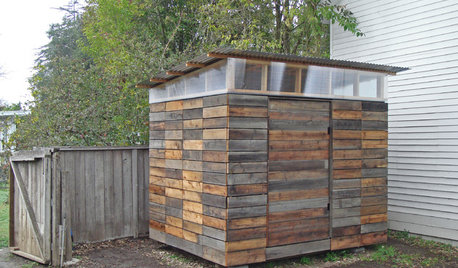
STORAGE2 Weeks + $2,000 = 1 Savvy Storage Shed
This homeowner took backyard storage and modern style into his own hands, building a shed with reclaimed redwood and ingenuity
Full Story
GARDENING AND LANDSCAPINGNew This Week: 3 Fire Pits Herald the Start of Summer
Toast summer — and marshmallows — with these sizzling fire pit designs recently uploaded to Houzz
Full Story
LANDSCAPE DESIGNPatio of the Week: Rustic, Modern and Japanese-Inspired
A landscape designer found on Houzz outfitted this cozy space with a fireplace, a gas fire pit and an outdoor kitchen
Full Story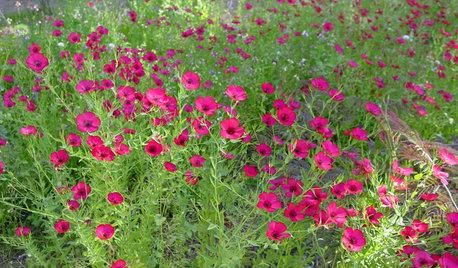
GARDENING GUIDESSouthwest Gardener's August Checklist
Manage monsoon effects, remember to fertilize and don't let the heat deter you from planting for fall
Full Story
TRENDING NOWThe Top 10 Patio Photos of 2018
This year’s most popular patios are sure to inspire Houzz users to lounge, dine and entertain
Full Story
LIVING ROOMSNew This Week: 3 Living Rooms Focus on the Fireplace
Get crackling with inspiration from 3 spaces that center on the hearth
Full Story
ENTRYWAYSNew This Week: 4 Smart-Storage Entryways
Architects and designers share details on their solutions for organized entryways and mudrooms uploaded recently to Houzz
Full Story
HOME OFFICESNew This Week: 3 Home Offices That Know How to Work It
We look at the designers’ secrets, ‘uh-oh’ moments and nitty-gritty details of 3 great home offices uploaded to Houzz this week
Full Story
DECKSTrending: 10 Awesome New Outdoor Ceilings Popular in Summer 2018
See the innovative covered decks, patios and porches that have been getting the most saves. Which is your favorite?
Full Story
LIVING ROOMSNew This Week: 3 Rustic and Cozy Living Rooms
Reclaimed wood and stone fireplaces set the stage for a feel-good atmosphere away from the cold
Full StorySponsored



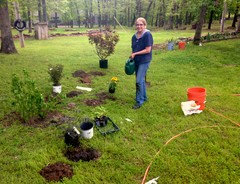
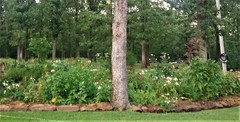
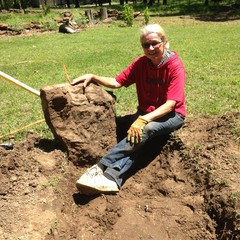
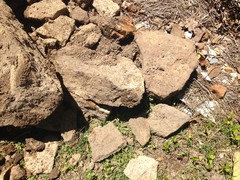
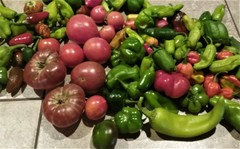
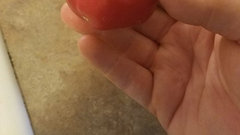
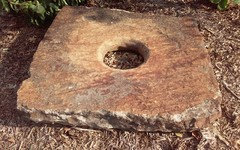

slowpoke_gardener